Sleep Soundly While Camping with These Ultralight Sleeping Pads
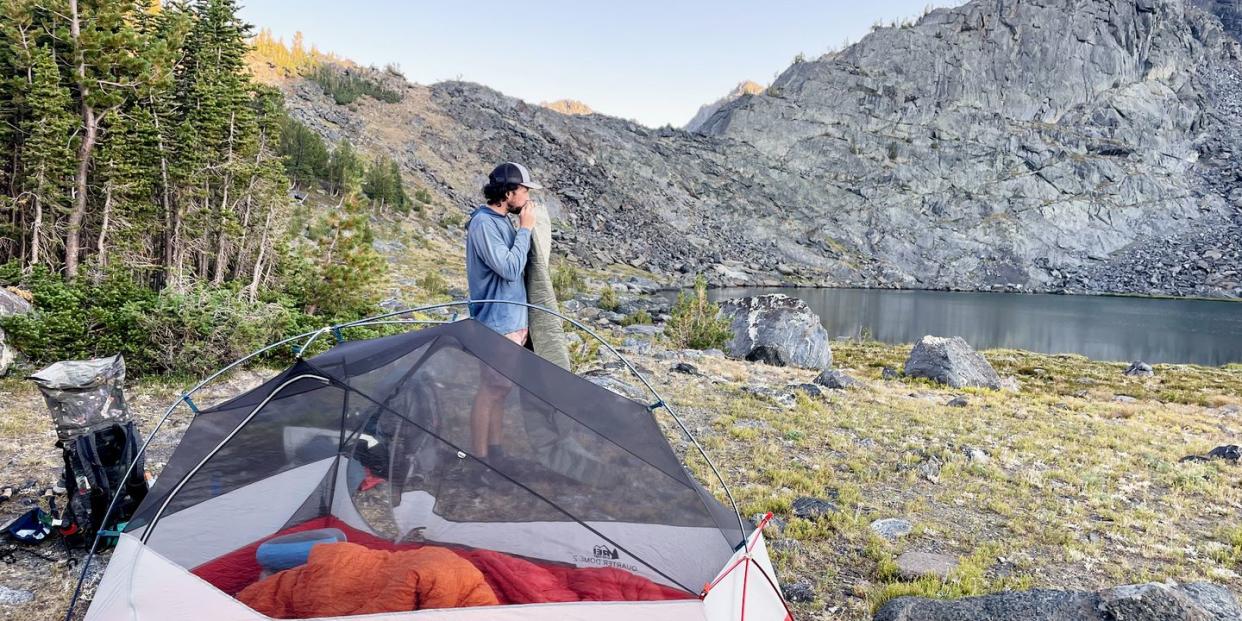
"Hearst Magazines and Yahoo may earn commission or revenue on some items through these links."
A sleeping pad is a core component of your backpacking / camping sleep system. When paired with the right sleeping bag, your sleeping pad will make for a comfortable night of sleep with protection from the cold, hard ground.
Gone are the days where you have to choose between comfort and weight, packing a bulky pad just to stay protected from the ground. Sleeping pads these days are durable, lightweight, and still provide plenty of warmth and a good night of sleep.
We’ve rounded up the best sleeping pads that don’t compromise on warmth, durability, or comfort, and add as little weight to your pack as possible. These are the best ultralight sleeping pads for backpackers and campers of all types, with most models weighing 1 pound or less, and most hitting an R-value of at least 3.0.
Best Ultralight Sleeping Pads
The Expert: I have backpacked thousands of miles, including thru-hikes of the Appalachian Trail, Colorado Trail, and Ouachita Trail. I’m currently checking off sections of the Oregon Coast Trail and the Arizona Trail, and I’m getting ready for a 2,700-mile bike tour this summer. All of these miles (and months) sleeping on the ground mean I’ve gotten my sleep system dialed, which includes testing and knowing the best sleeping pads for durability, weight, and comfort.
How to Choose an Ultralight Sleeping Pad
Do you want an inflatable or a foam pad?
Both varieties have pros and cons, and your choice depends on terrain and personal preference.
An inflatable pad consists of a shell material paired with lightweight insulation or reflective material on the interior. They roll up into small cylinders that can be surprisingly packable, and are often quite cushioned. Keep in mind you’ll have to inflate the sleeping pad each night, though some take more effort than others. These aren’t as durable as foam pads, but many people find them more comfortable.
Closed-cell foam pads are folded accordion-style, and are typically strapped to the outside of your pack. These are lightweight, but often have a lower R-value than inflatable pads and don’t provide as much protection from the ground. Many hikers love the convenience and durability of these pads, and they can double as sit pads during the day.
What does R-value mean?
The “thermal resistance rating” (R-Value) is a measure often used in construction to determine how well a material resists heat loss, and it’s also how we describe the warmth of a sleeping pad. The higher the R-value, the warmer the sleeping pad. Many foam pads have an R-value of about 2, while inflatable pads can range from 3-7 or higher.
A good three-season sleeping pad is around a 3.5 R-value. If you are a colder sleeper, you’ll be more comfortable with an inflatable pad with an R-value of 3.5 or more. If you plan to hike in the winter, look for a winter-ready pad with an R-value of at least 5.
How long does the sleeping pad take to inflate?
While we don’t have exact measurements (everyone's lung capacity is different), some inflatable pads take more breaths to inflate than others. This can be due to construction of the pad, valve flow, or a combination.
In my experience, the popular Therm-a-Rest NeoAir XLite takes between 25-30 breaths to inflate, while my other primary sleeping pad (Sea to Summit Women’s Ultralight Insulated Air) takes 10-12 breaths. Both pads are comfortable, they just use a different insulation and construction. You can buy a separate inflation sack to help, and some pads even come with one.
How We Selected
These sleeping pads have been independently tested, some for more than 1,000 miles in all four seasons. I have been an avid backpacker for nearly 10 years, paring down my gear kit to be as light as possible without compromising comfort. This means looking for the most comfortable sleeping pads and considering different models depending on the trip, weather, and terrain.
These sleeping pads are all suited for three-season use, and some can take you deep into winter. I looked for a variety of sleeping pads that all weigh around 1 pound or less, provide ample protection from the cold ground, and can stand up to many nights without popping or deflating. These range in price points and weights, and I considered different types of sleepers’ needs for a comfortable night outdoors.
NeoAir XLite
With an R-value of 4.5, 3-inch thickness, and a nominal weight of 13 ounces, it’s no surprise the NeoAir XLite is a favorite amongst ounce-counting backpackers who don’t want to sacrifice comfort and warmth. I have used some iteration of this sleeping pad since my Appalachian Trail thru-hike in 2015, and it’s been a go-to in my sleep system arsenal since.
Back then, the main complaints about the NeoAir was the low air-flow valve that resulted in upwards of 30 breaths to inflate the pad, and the potato-chip -bag crackling noise that erupted from the insulation whenever you rolled over. The newest update has eliminated those issues, with a new WingLock valve that decreases the breaths needed to inflate this pad by up to 1/3, as well as a faster deflation rate.
It’s also much quieter, using the same ThermaCapture and Triangular Core Matrix for the ultralight, warm insulation, but a new internal construction that eliminates a lot of the crackling noise.
Along with being warm and light, this sleeping pad has an incredibly compressible insulation structure, which allows it to roll up to the size of a standard Nalgene and tuck easily into a pack.
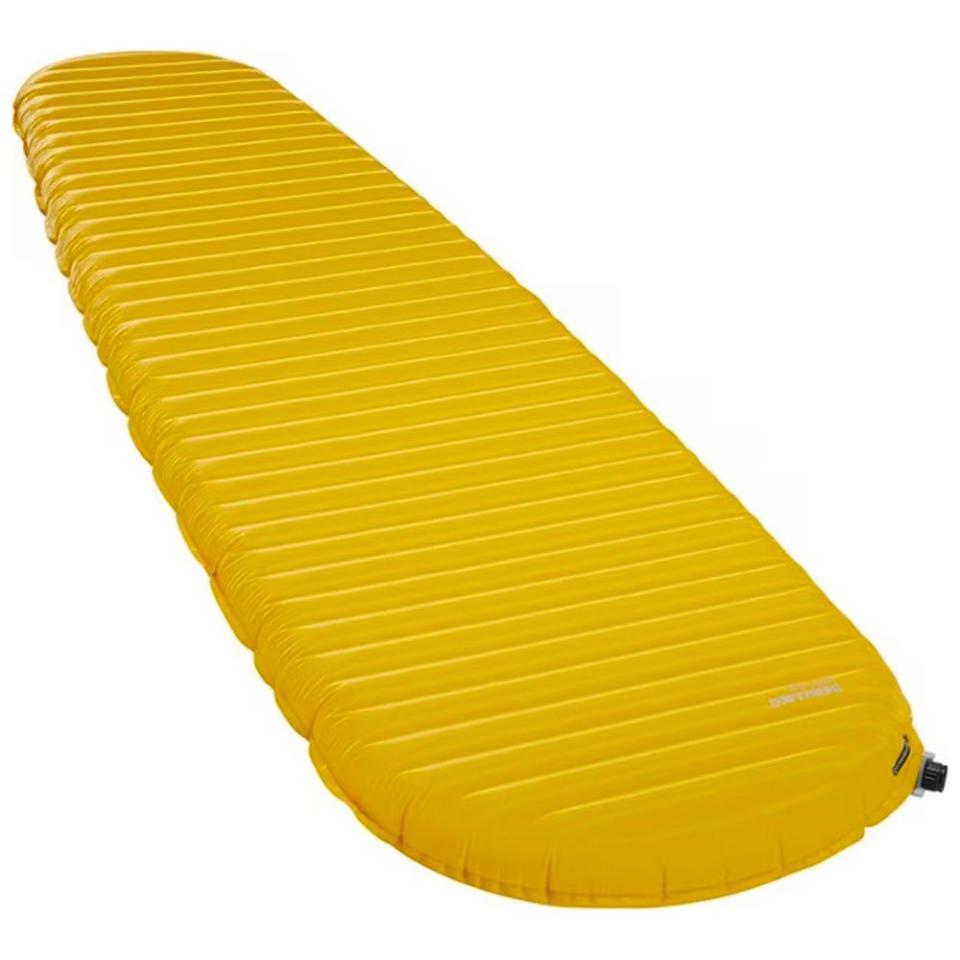
NeoAir XLite
$209.95
rei.com
Ultralight Insulated Air Sleeping Pad
While you should still avoid smacking this pad on a sharp rock or cactus, the 40D ripstop nylon on the bottom (30D on the top) and denser core helps make this pad less prone to popping than other inflatable pads.
This is a more recent addition to my pack, and I’ve found the welded baffling (called “Air Sprung Cell technology”) and top patterning of this sleeping pad helps keep me in a more comfortable position than some taller options. You’re less likely to roll off of it, though the bulkier deflated structure doesn’t pack down quite as small.
However, the loftier insulation materials helps this sleeping pad become even more adjustable, as you can fine-tune the inflation with the multifunction valve and still have enough protection from the ground.
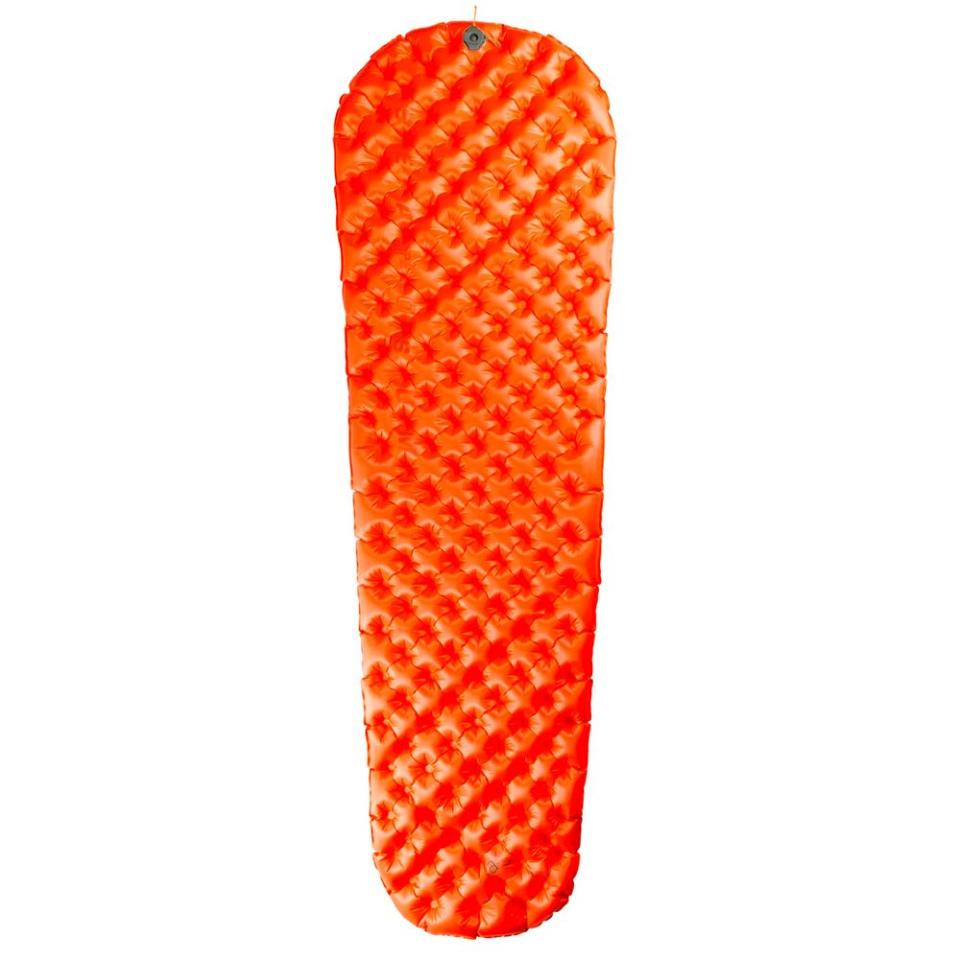
Ultralight Insulated Air Sleeping Pad
$179.00
rei.com
Tensor Alpine Air Pad
NEMO’s Tensor Alpine Air Pad combines an at-home mattress feel with a compressible construction and adjustable valve for a sleeping pad that feels comfortable well into the colder months. This sleeping pad has a flat-lying valve that is easy to adjust to your preferred inflation level, and deflates quickly to speed up morning packing.
The insulation is quieter than other models, using a reflective thermal material to help retain body heat, contributing to this higher R-value in a relatively lightweight package.
This is a comfortable sleeping pad not just for the adjustability, but for the dedicated design and construction that creates a cushioned, supportive loft that doesn’t feel too springy—you’re less likely to roll off of this at night.
This sleeping pad weighs a few more ounces than our lightest options, but you get extra padding with the three layers of insulation, and an R-value closer to a winter pad. Pair this with the right sleeping bag and liner and you’ll be comfortable even on moderate winter nights.
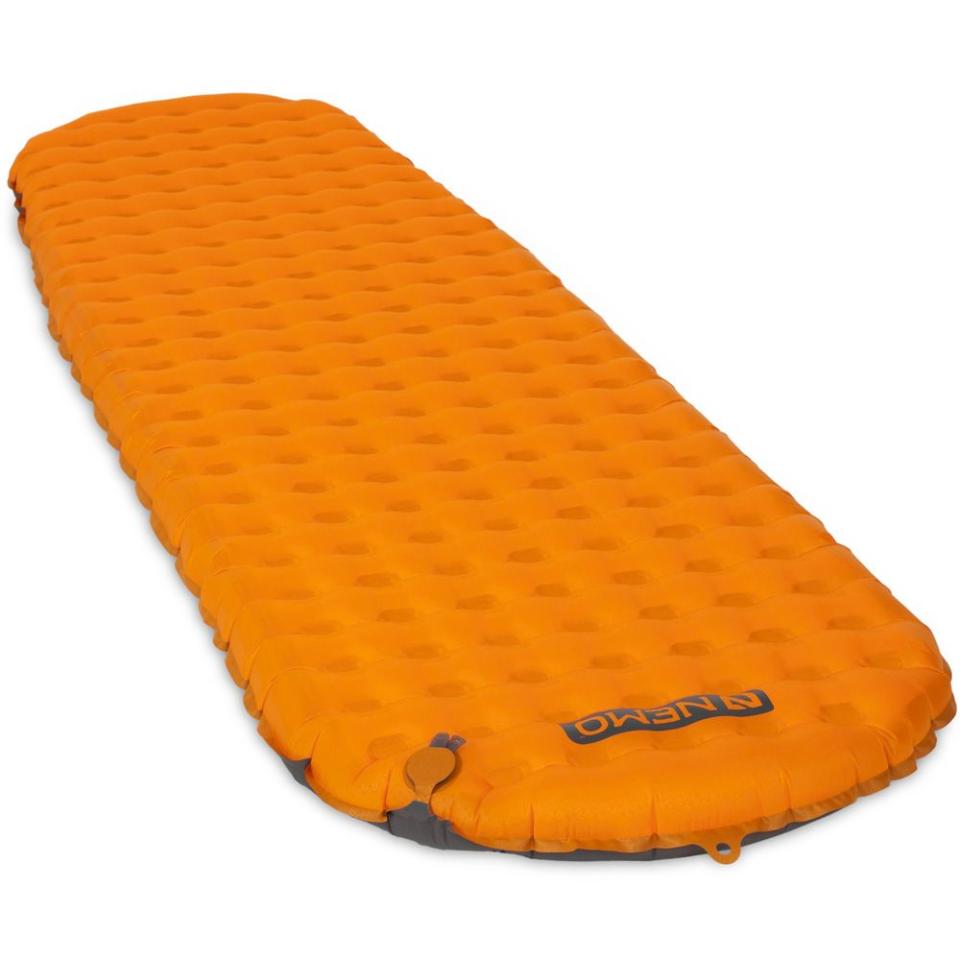
Tensor Alpine Air Pad
$250.00
rei.com
Rapide SL Insulated Sleeping Pad
This plush option from Big Agnes has larger outer air chambers to help cradle you in the center of the pad, helping prevent the dreaded middle-of-the-night roll onto the hard ground. The center air chambers are 3.5-inches thick, with the outer chambers rising to a lofty 4.2-inches.
The height of this pad also makes it fantastic for side sleepers—with adequate inflation, you’ll never feel the ground, no matter how hard or rocky it is. It also has a quilted top that feels similar to true mattresses, and the included inflation sack can take some of the sting out of inflating such a large pad.
At 19 ounces, this is at the upper level of what we’d consider “ultralight,” but we know everyone sleeps differently, and the few extra ounces for maximum side-sleeper comfort can be worth it to plenty of people.
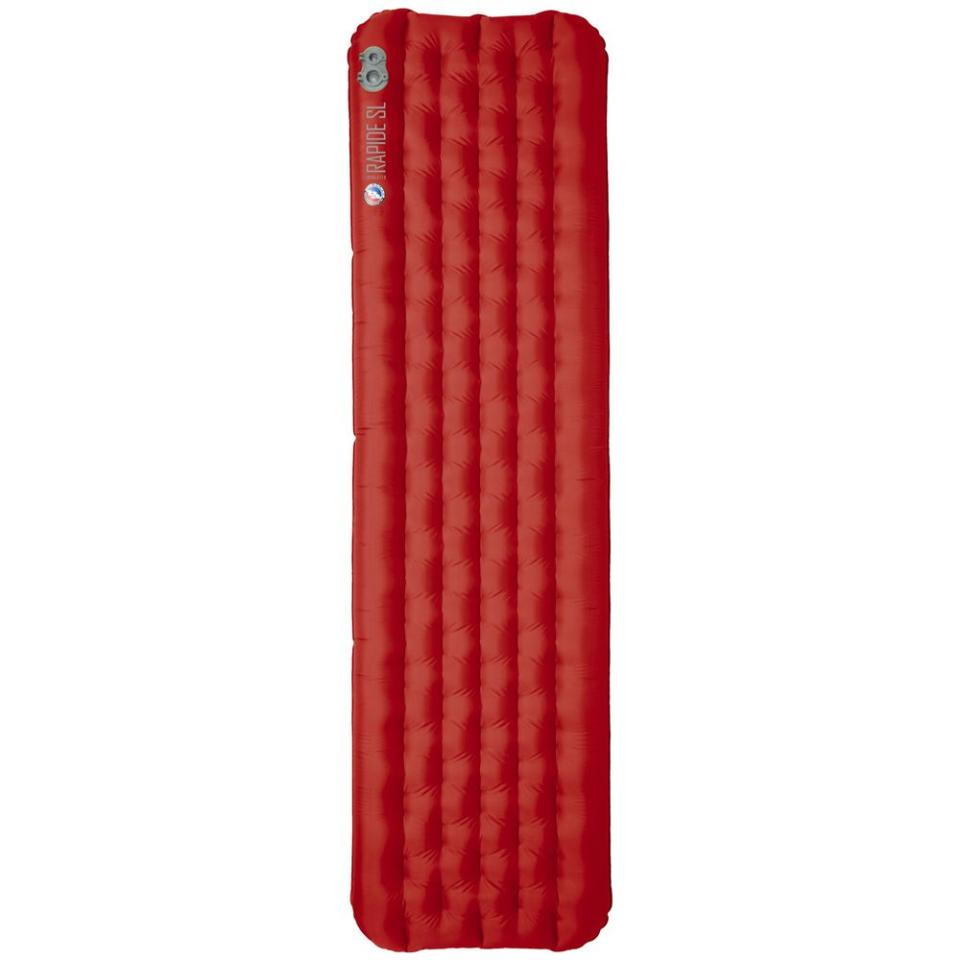
Rapide SL Insulated Sleeping Pad
$149.95
rei.com
NeoAir XTherm NXT Sleeping Pad
A winter sleeping pad that has warmth without bulk can be a tricky find, but this model from Therm-a-Rest manages to stay right at the 1 lb. mark with an R-value of 7.3 by using the same Triangular Core Matrix as the three-season NeoAir XLite.
This pad attains its high level of warmth-without-bulk by trapping your body heat as you sleep and reflecting it back to you without the need for any plush insulation. The honeycomb pattern of the internal baffles is covered with the reflective coating, which offers the loft without extra material, and also means this packs down small.
Variations of this model have been around for a while, but the latest update offers an increased R-value (from 6.9 to 7.3) and 3-inches of thickness instead of 2.5-inches. Like the updated NeoAir XLite, the internal structure has been revamped for a quieter night of sleep, and this model has the same WingLock valve for easier inflation and faster deflation.
This sleeping pad has a rugged 70D nylon bottom for more durability, though we still recommend being careful where you place it on the ground.
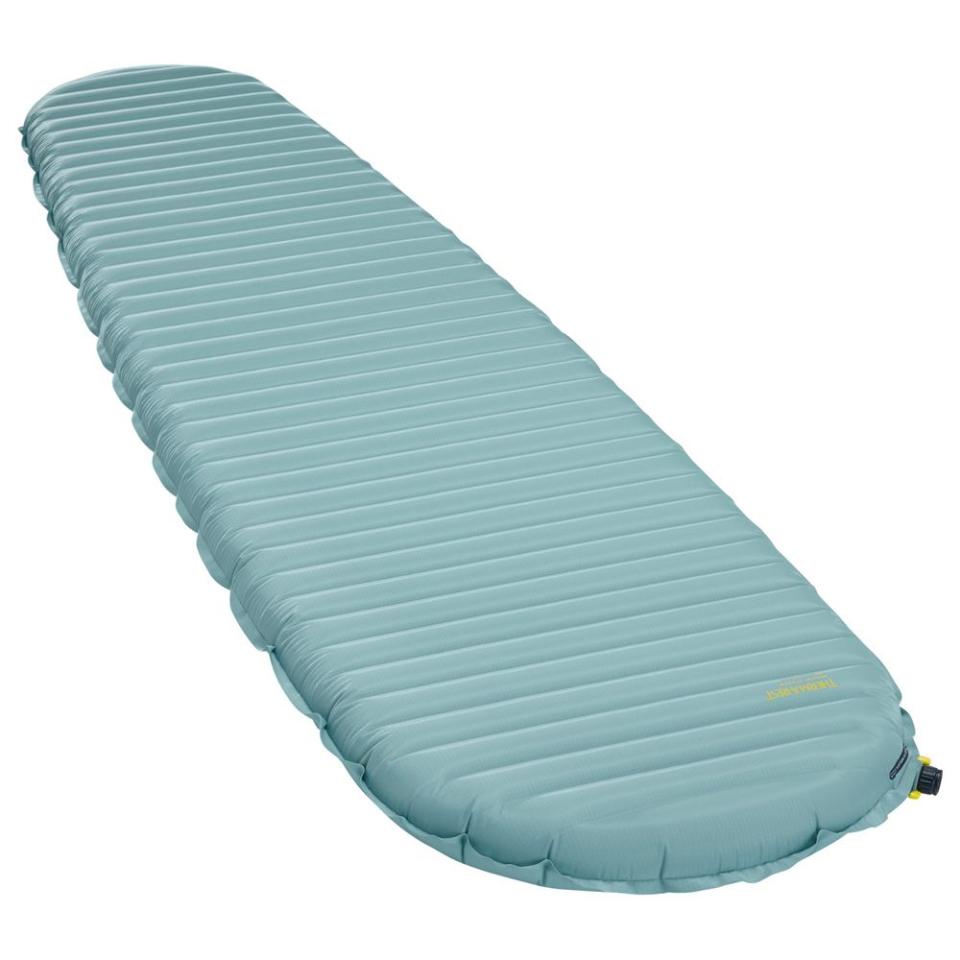
NeoAir XTherm NXT Sleeping Pad
$269.95
rei.com
Switchback Sleeping Pad
A z-fold foam pad is a great option for backpackers traveling through areas more prone to popping sleeping pads (the desert!) or who just don’t want to inflate and deflate a pad every day.
Closed-cell foam pads were the most common style of pad on my 200-mile section of the Arizona Trail last year, and during the day, hikers would throw their pads onto the ground for a midday break.
This pad is made from a dense, lightweight foam molded into an egg-carton style with nodes that fold into themselves for transportation, saving space without sacrificing protection from the ground. The Switchback has two different foams used to build out this pad, with an abrasion-resistant lower layer that doesn’t compress over time, and a more forgiving top layer that increases comfort during sleep.
These pads aren’t as plush as an inflatable pad, and the lower R-value somewhat limits how cold your trips can be, but for durability and convenience, this z-fold pad can’t be beat.

Switchback Sleeping Pad
$49.95
rei.com
Women’s Ultralight Insulated Air Sleeping Pad
In the past season we’ve seen a few brands eliminating their women’s-specific sleeping pads, which is a bummer, since the narrower width and slightly shorter pad works well to trim weight without losing insulation and comfort. This was my go-to pad on a 500-mile Colorado Trail thru-hike, maintaining my ideal inflation levels even at campsites above 10,000 feet.
This pad has the same durable surface materials as Sea to Summit’s Ultralight Insulated Air Sleeping Pad, with a 40D nylon on the bottom and 30D on the top. It has the dense, cushioned AirSprung Cells that provide protection without feeling too tight or slippery, and it weighs a few ounces less than the standard version with a higher R-value.
It is 66-inches long and 21.5-inches wide, which fits well without seeming too narrow. Like other Sea to Summit sleeping pads, this is available in a wider version as well, just scaled down for the women’s-specific model.
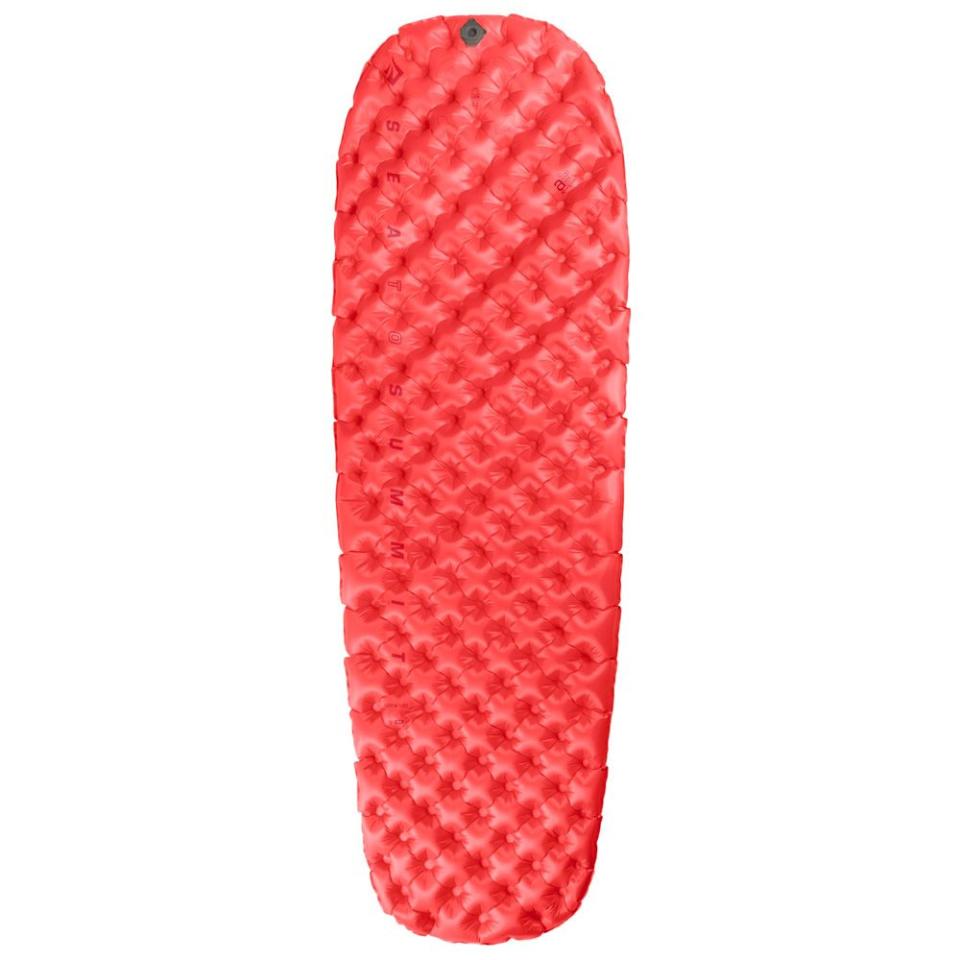
Women’s Ultralight Insulated Air Sleeping Pad
$159.00
rei.com
Ultra 3R Duo Sleeping Pad
A two-person sleeping pad isn’t for everyone, but if you’re going this route, you’ll want a model with separate chambers for each side so each person can adjust to their own preference. This two-sided design also means that if one person is moving around in their sleep, they are less likely to wake up their hiking partner.
It’s built with microfiber insulation and a non-slip surface, which is comfortable, quiet, and helps keep you from sliding off the pad with a slippery sleeping bag surface. The baffles are welded, providing consistent insulation and protection from the ground. If you’re on the fence about a two-person pad, the strategy with packing this way means an easier division of shared packed items, which can save both pack weight as well as precious tent floor space.
This three-inch mattress has an R-value of 2.9, a solid option for three-season trips, but a little light for colder weather.
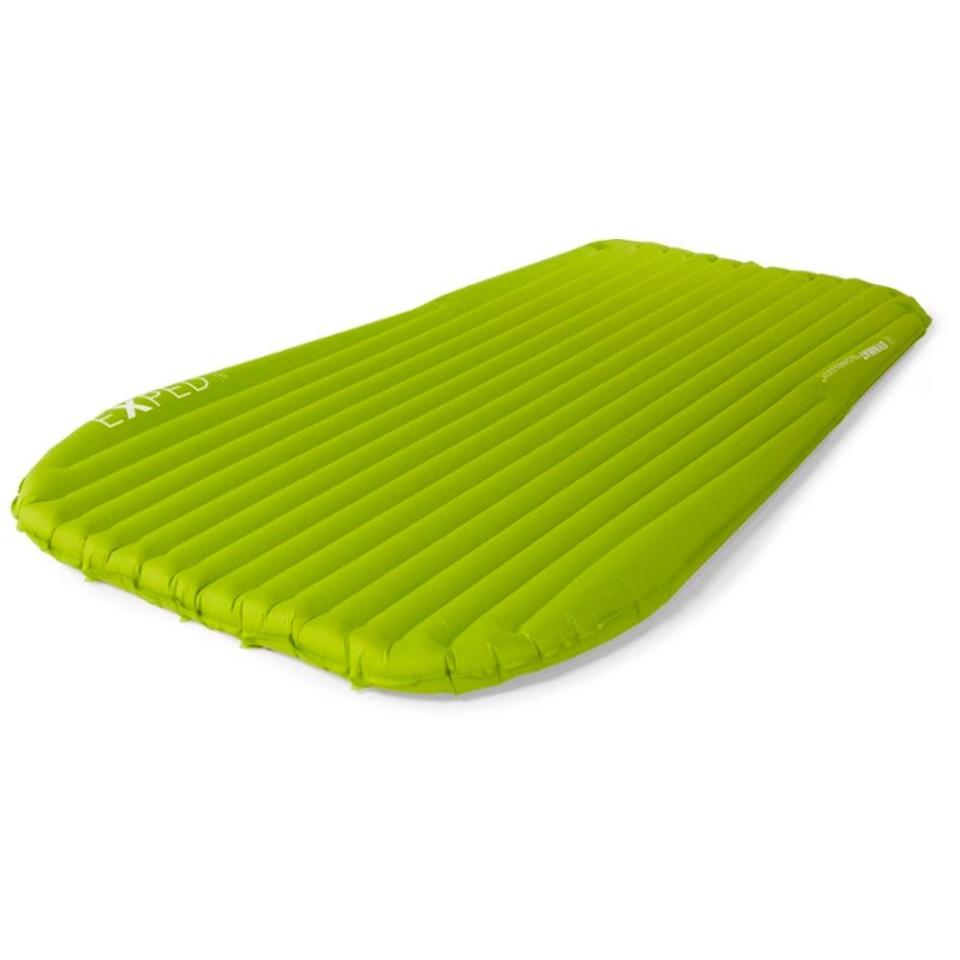
Ultra 3R Duo Sleeping Pad
$299.95
rei.com
Q+A
PM: What is your main criteria for picking a sleeping pad?
MS: I’m looking for an impressive warmth-to-weight ratio and small packed size. For this reason, my two primary sleeping pads are the Therm-a-Rest NeoAir XLite, and the Sea to Summit Women’s Ultralight Insulated Air. Both weigh under 16 ounces and have high enough R-values for cold alpine nights.
The NeoAir packs down smaller and is a few ounces lighter than the Ultralight Insulated Air, but I tend to sleep better with the surface design of the Sea to Summit model and it takes fewer breaths to inflate. My final pick depends on whether I’m going for ultimate space-saving (Therm-a-Rest) or my personal sleep preference (Sea to Summit).
PM: What R-value do you take on most trips?
MS: For anything except deep winter, I want an R-value of at least 3.2. I pair this with my 20-degree ultralight sleeping bag, and I’m snug as a bug in a rug. A 3.2 to 3.5 R-value has been more than enough for a November thru-hike with nighttime temperatures in the 20s, to my Colorado Trail thru-hike where I was camping at 10,000 feet and waking up with my tent completely iced over.
PM: Do you like inflatable or foam pads more?
MS: I sleep much better on inflatable pads. This comes with a cost though, as it means I don’t carry a foam pad and can’t take a midday siesta like other hikers who slap their pad on a rock and pass out.
It also means that I have to inflate my pad every night, which is a pain after a full day of hiking. For me, the effort and concern about popping is worth it for the higher R-value and plusher sleep surface.

You Might Also Like

